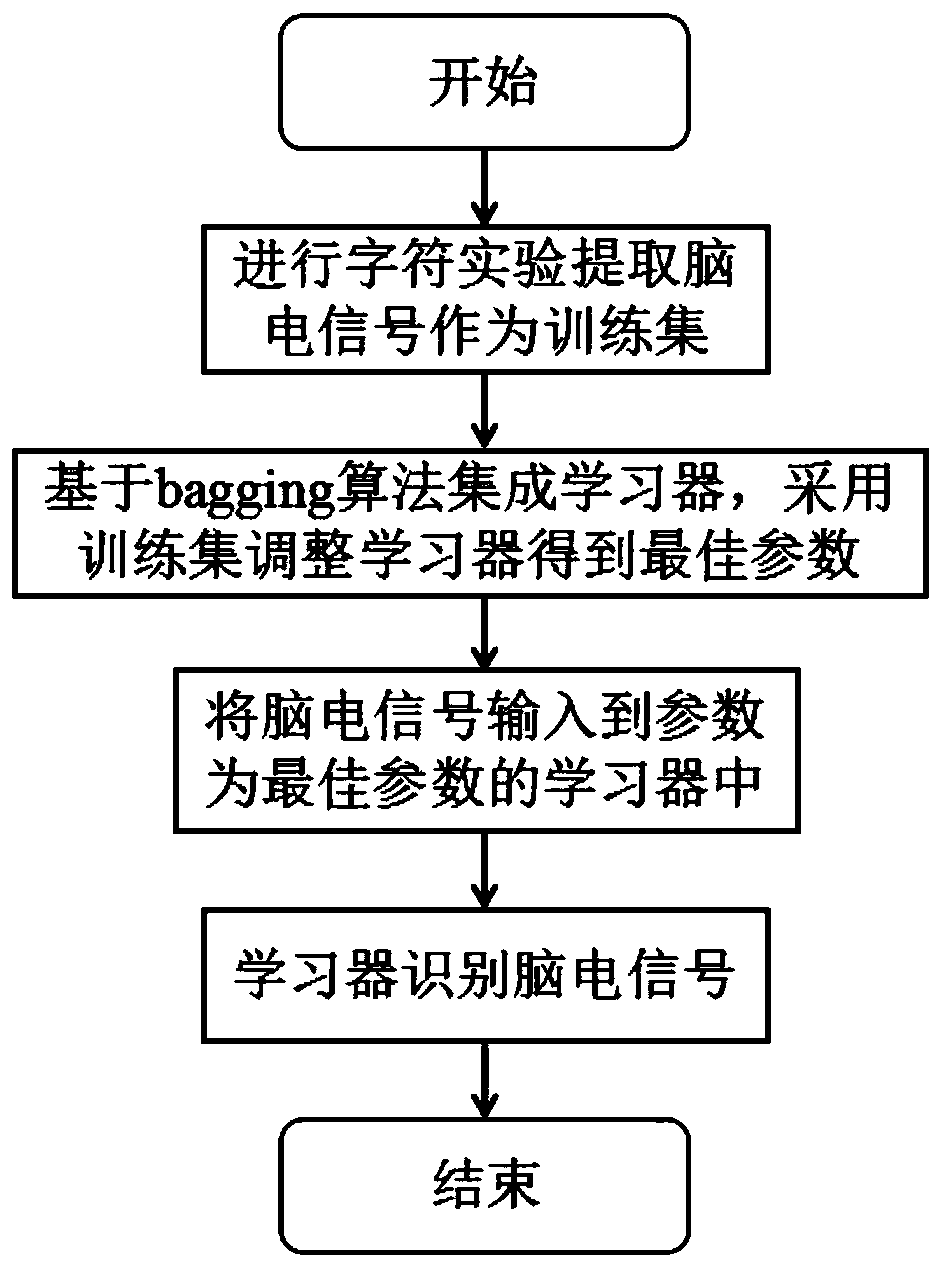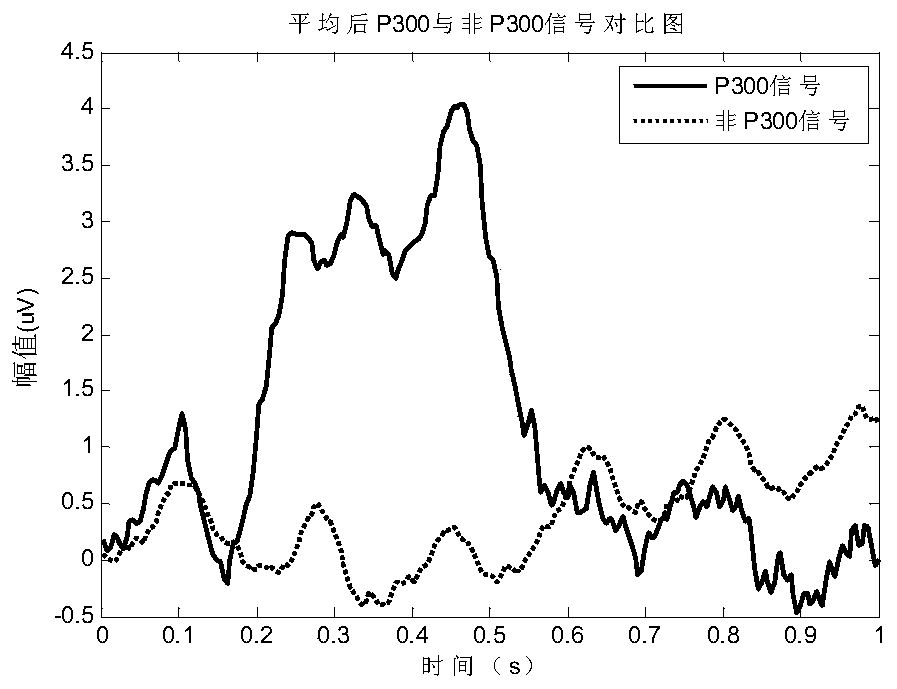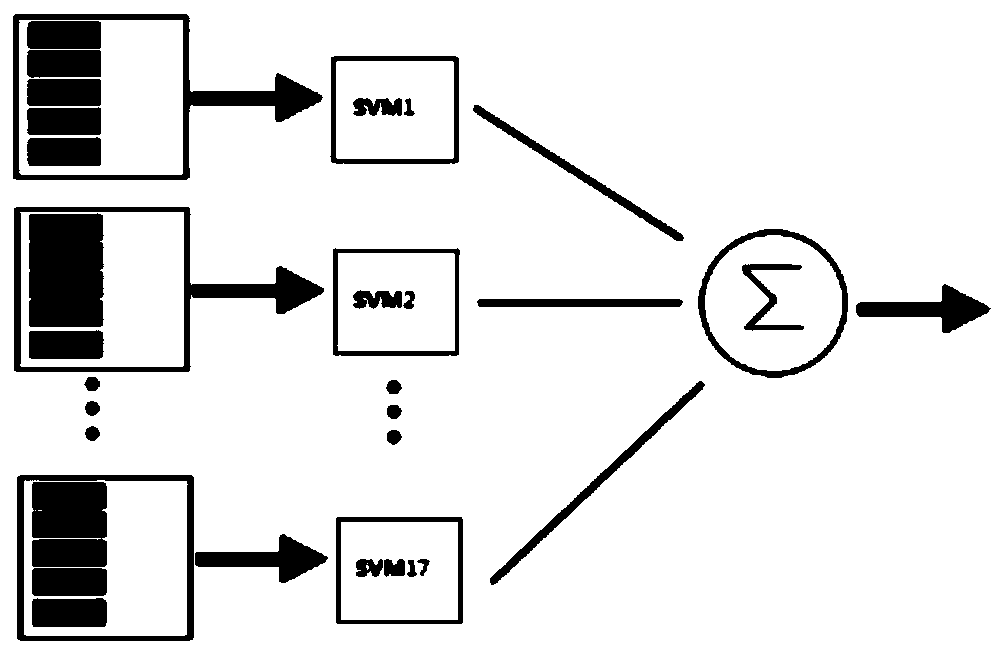A kind of recognition method of electroencephalogram signal
An electroencephalographic signal and identification method technology, applied in the field of electroencephalographic signal identification, can solve the problems of hindering the popularization and application of support vector machines of P300 signals, poor overall generalization ability, and low classification accuracy, so as to optimize the identification performance, improve the The effect of identifying performance and improving intelligence
- Summary
- Abstract
- Description
- Claims
- Application Information
AI Technical Summary
Problems solved by technology
Method used
Image
Examples
Embodiment Construction
[0045] The present invention will be further described below in combination with specific embodiments. It should be understood that these examples are only used to illustrate the present invention and are not intended to limit the scope of the present invention. In addition, it should be understood that after reading the teachings of the present invention, those skilled in the art can make various changes or modifications to the present invention, and these equivalent forms also fall within the scope defined by the appended claims of the present application.
[0046] A method for identifying EEG signals, such as figure 1 As shown, the steps are as follows:
[0047] (1) Carry out character experiments and extract EEG signals containing P300 signals as a training set. The specific operation is: select a character on the 6×6P300 character speller, and then the character speller flashes randomly row by row or column by column to generate EEG Signal, when the row or column where ...
PUM
 Login to View More
Login to View More Abstract
Description
Claims
Application Information
 Login to View More
Login to View More - R&D
- Intellectual Property
- Life Sciences
- Materials
- Tech Scout
- Unparalleled Data Quality
- Higher Quality Content
- 60% Fewer Hallucinations
Browse by: Latest US Patents, China's latest patents, Technical Efficacy Thesaurus, Application Domain, Technology Topic, Popular Technical Reports.
© 2025 PatSnap. All rights reserved.Legal|Privacy policy|Modern Slavery Act Transparency Statement|Sitemap|About US| Contact US: help@patsnap.com



